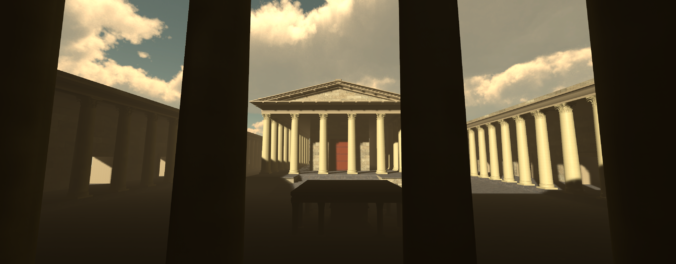The Digital Palmyra project began in the summer of 2018 when my colleagues and I discovered that we shared an interest in using virtual reality (VR) technology to create immersive, historical reconstructions for academic research and cultural preservation. Additionally, we each had some complementary experience in 3D modeling technologies, historical research, and software development, and were all fascinated with Palmyra and shocked by the destruction to the archaeological site by ISIS.
As we soon learned, designing a digital reconstruction of an entire city is a huge undertaking. Add VR to the mix and it can be daunting. Not only does each building need to be 3D modeled, but even the ground your digital avatar walks on (or sees from a distance) needs to be carefully designed if the resulting simulation is to look true to life. And that’s just the beginning.

Palmyra terrain created in Unity based on satellite imagery.
While our reconstruction is nowhere near complete, my collaborators and I want to share what we have accomplished so far. Perhaps more importantly, we want to share the tips, tricks, tools and workflows we have picked up along the way. In this series of blog posts we will be discussing our processes for everything from designing historically accurate 3D models of structures and optimizing those models to work well in VR to building realistic environments using Unity3D. We will assume a low level of familiarity with our suite of tools to make them suitable for beginners and intermediate users alike.
Our hope is that these posts may assist other designers and developers engaged in similar projects.
The first of these will be coming soon–stay tuned!
